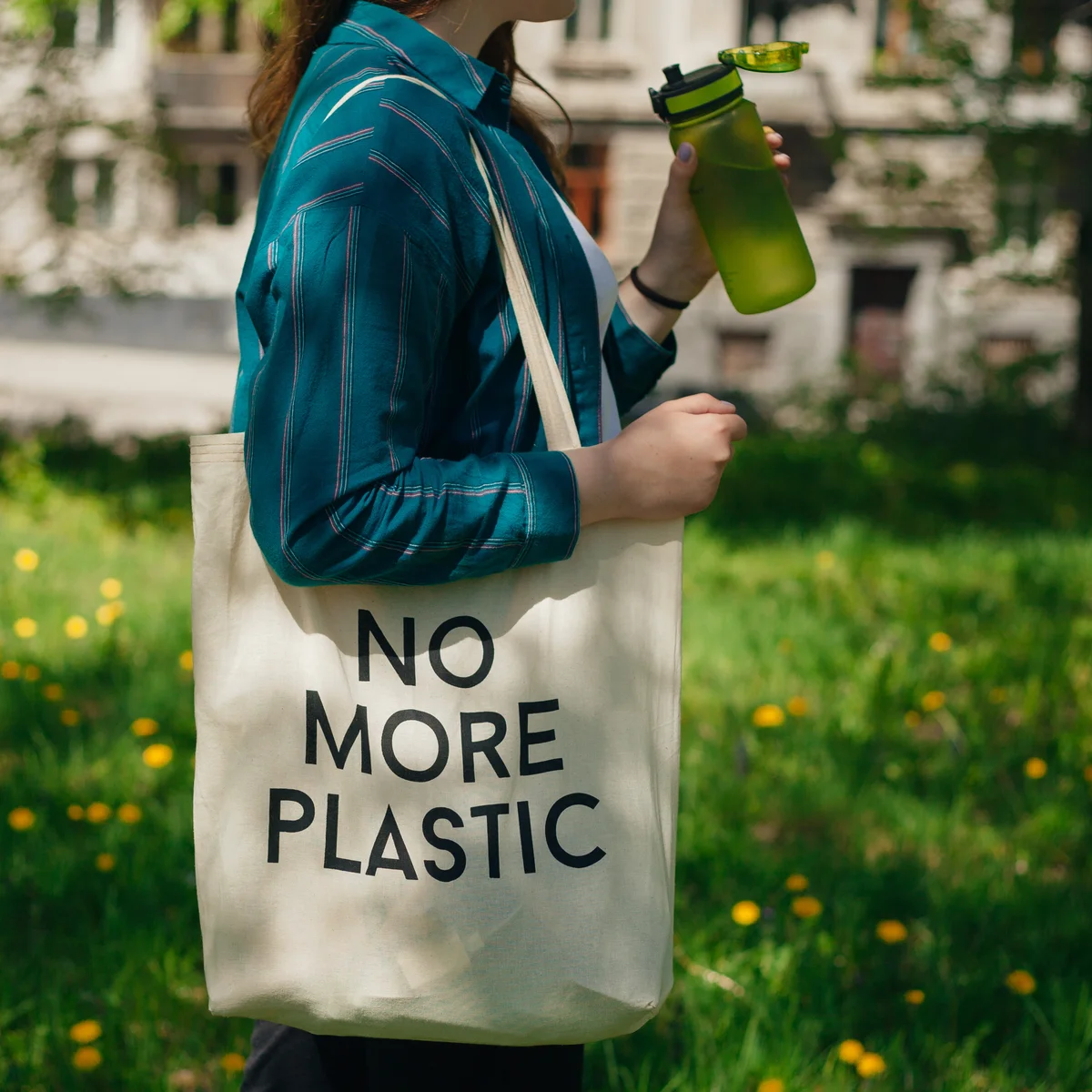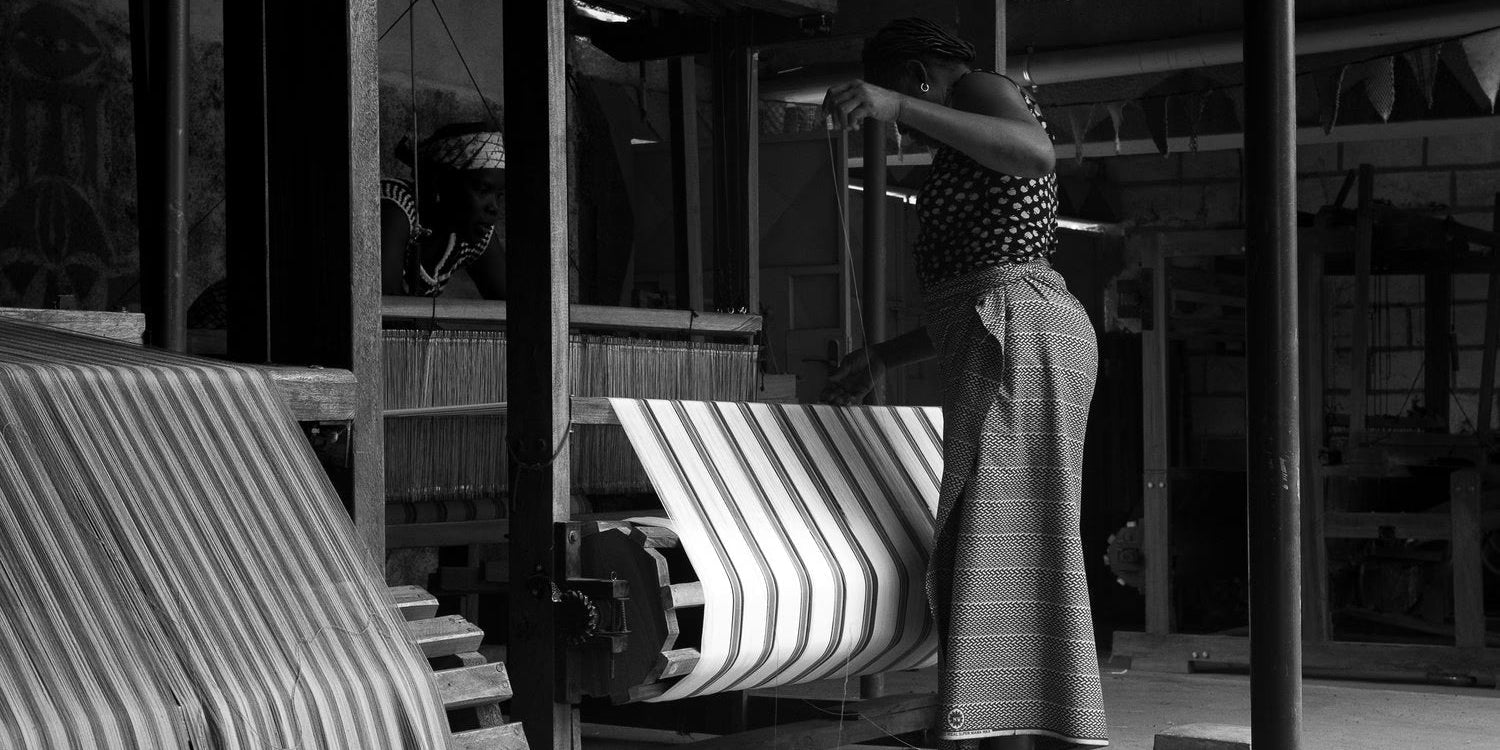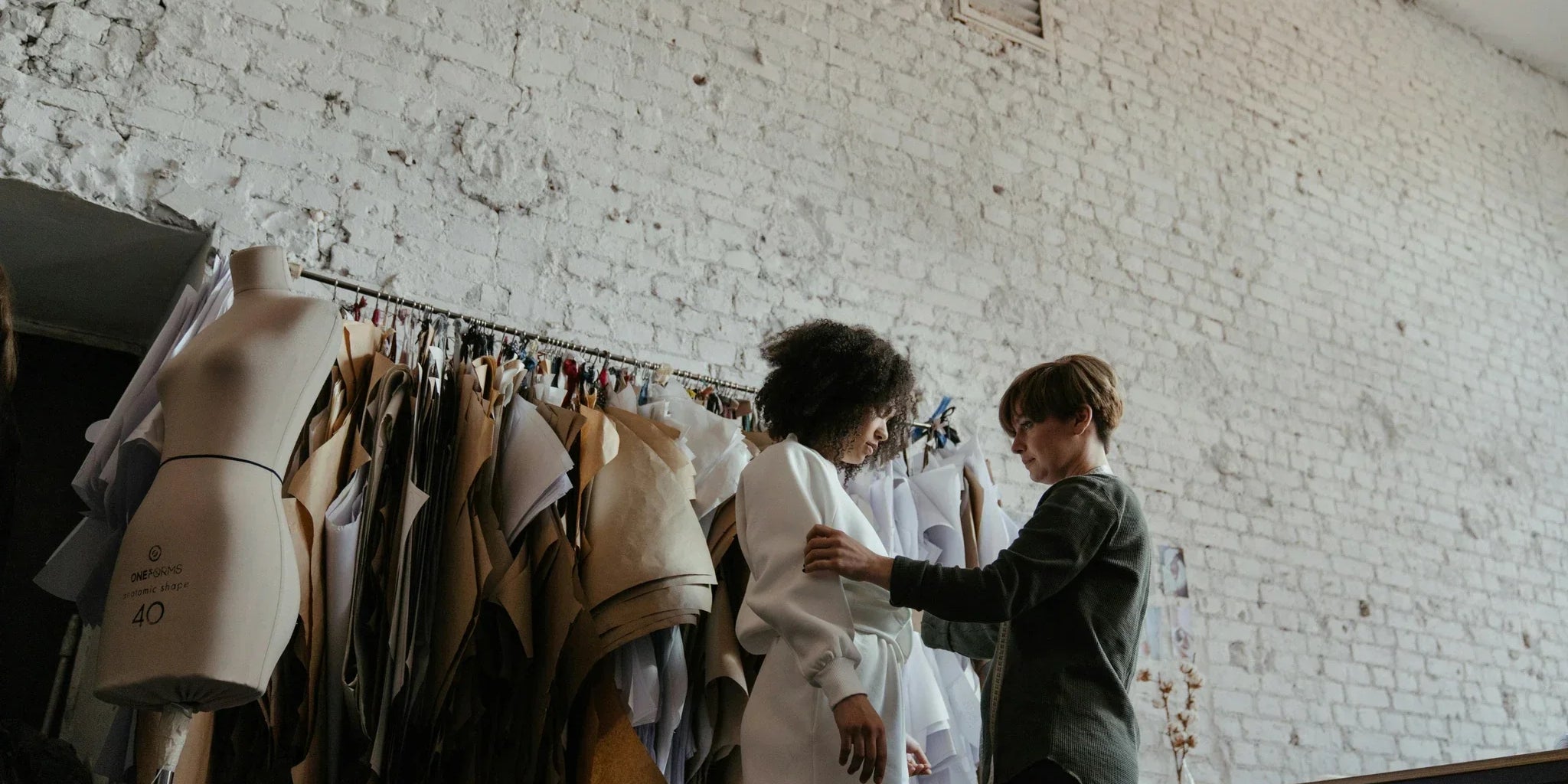Fashion has always been more than just clothing. It’s a reflection of culture, a form of personal expression, and a multibillion-dollar industry that touches every corner of the globe. But in recent years, the industry side of it has found itself at a critical crossroads. With growing concerns about the environmental impact of fast fashion, unethical labor practices, and resource depletion, the demand for sustainable fashion has become impossible to ignore.
Once a niche topic relegated to eco-conscious consumers and fringe brands, sustainable fashion has evolved into a mainstream conversation. Now, industry giants, small brands, and consumers alike are grappling with what it truly means to be “sustainable.”
Now, the pressure to shift toward more responsible practices isn’t just coming from consumers but also from governments and regulatory bodies. What was once a trend has transformed into an imperative.
This shift brings both opportunities and challenges, particularly for small and medium-sized enterprises (SMEs) navigating the complex world of sustainable fashion. As larger brands have the budget to invest in sustainability initiatives and governments introduce stricter regulations, SMEs may find themselves asking: How can we keep up? How can we afford to be sustainable? And most importantly, how can we thrive in a future where sustainability is not just a buzzword but a fundamental requirement for survival?
This guide will walk you through the evolution of sustainable fashion, explore the new meaning it has taken on, and provide insight into the business side of sustainability. We will dive into the challenges SMEs face in adopting sustainable practices, highlight the regulatory changes that are reshaping the industry, and introducing you to a game-changing tool for sourcing sustainable materials and building a responsible business. If you're an SME looking to navigate this new era in fashion, this guide is your roadmap.
What is Sustainable Fashion?
Imagine walking into a clothing store and knowing, without a doubt, how every purchase you make impacts the environment, workers, and animals. It’s a vision of a world where fashion no longer harms but instead contributes positively to people and the planet. This is the ultimate goal driving the sustainable fashion movement—a utopian vision that the industry is slowly but surely moving toward.
According to Good On You, sustainable fashion is rooted in the concept of sustainable development, which the United Nations defined in 1987 as “development that meets the needs of the present without compromising the ability of future generations to meet their own needs.”
At its best, sustainable fashion strives to manage its environmental footprint within the Earth’s natural limits while ensuring fair treatment and well-being for all people and animals throughout the supply chain.
But as noble as the term sounds, it’s far from simple. Achieving true sustainability in fashion requires a fundamental overhaul of the industry, from reducing overproduction and waste to fighting worker exploitation and tackling the climate emergency.
Concepts like degrowth and circular economy—which advocate for reducing consumption and designing products with reuse and longevity in mind—are becoming more central to the conversation. These systemic changes are essential for creating a truly sustainable fashion future.
However, the term "sustainable fashion" has become somewhat diluted and overused. As Good On You highlights, with rising consumer demand for eco-friendly products, many brands have co-opted the language of sustainability for marketing purposes without making significant changes—leading to greenwashing. As a result, while some brands can be "more sustainable" than others, no brand or product can claim to be completely sustainable under current models.
Policymakers are stepping in to address this vagueness. In places like New York and the European Union, regulations are being developed to define how brands can use terms like "sustainable" in their marketing. These efforts are crucial to protecting the integrity of sustainable fashion and ensuring that consumers are not misled by empty claims.
Sustainable fashion incorporates multiple dimensions: environmental responsibility, social justice, and economic viability. Brands committed to sustainability take steps to reduce water usage, cut down on carbon emissions, and minimize waste. They prioritize ethical labor practices, ensuring workers are paid fairly and treated with dignity. Finally, sustainability also includes economic considerations, ensuring that businesses, especially smaller ones, can thrive while doing good.
In the early 2000s, sustainable fashion was often seen as a niche market, with a limited selection of eco-friendly products that were more expensive and less accessible. Fast forward to today, not much has changed. Brands are held accountable by their customers to prove their commitment to sustainability through transparency and action. But how did we get here?
The Evolution of Sustainable Fashion Over the Last Decade
The past decade has seen a significant transformation in how the fashion industry approaches sustainability. Brands that wanted to be seen as sustainable often focused solely on swapping out traditional materials for "eco-friendlier" alternatives. However, as consumers became more informed, they began to demand more from the brands they supported.
This shift in consumer expectations pushed brands to adopt a broader approach. It was no longer enough to; brands had to look at the bigger picture. This meant reevaluating supply chains, labor practices, packaging, overall carbon footprint of their operations and more.
Over time, sustainable fashion has taken on new layers of meaning. It now encompasses not just environmental impact but also social responsibility and circularity—designing products that can be reused, repaired, or recycled to keep them out of landfills. Brands are moving toward closed-loop systems where waste becomes a resource for future products. This evolution has led to a more holistic view of what it means to be sustainable, but it has also introduced new challenges, particularly for smaller brands trying to keep up with these rapidly changing expectations.
What’s the Difference Between Ethical Fashion and Sustainable Fashion?
The terms ethical fashion and sustainable fashion are often used interchangeably, but they have slightly different focuses. Both movements aim to create a more responsible fashion industry, but they emphasize different aspects of what that responsibility looks like.
Ethical fashion is primarily concerned with the moral and social implications of the fashion industry. It looks at how fashion impacts people—specifically workers—and animals. It calls for fair wages, safe working conditions, and the humane treatment of animals. Furthermore, it also encompasses issues like vegan fashion and animal welfare, often focusing on what is considered "morally right" when it comes to how clothing is produced.
In other words, ethical fashion ensures that labor laws are not only followed but that workers are treated fairly, often exceeding the minimum standards of local laws.
On the other hand, sustainable fashion not only addresses social and ethical concerns but also places greater emphasis on the environmental impacts of the industry. It focuses on reducing pollution, conserving resources, and minimizing the industry’s carbon footprint, all while ensuring that the supply chain is transparent, fair, and well-compensated.
In the end, the truth is that ethical fashion and sustainable fashion are deeply interconnected. Ethical practices must inherently overlap with environmental sustainability—after all, by now we should all understand that it’s not a matter of one or the other. The challenges facing both people and the planet are intertwined, and it’s impossible to address one without considering the other. We should never have to choose between human welfare and environmental protection; this shouldn’t even be a question.
Therefore, sustainable fashion and ethical fashion must be seen as one unified approach. There is no sustainable future without ensuring fair treatment of people, just as there is no ethical solution without considering the environment. If our goal is to lower impact and promote real change, these two movements must work hand in hand, creating a fashion industry that supports both people and the planet equally. Together, they form the foundation for a responsible and truly transformative future.
Layers of Responsibility: Sustainability Beyond Fashion
Today, sustainable fashion is a complex, multi-layered concept that goes far beyond the use of eco-friendly materials. It includes every aspect of how a brand operates—from sourcing raw materials to production, distribution, and even how consumers dispose of products at the end of their lifecycle. The modern definition of sustainability also includes social and economic dimensions, such as ensuring fair wages and supporting local communities.
For businesses, embracing sustainability means taking a hard look at their entire supply chain. It’s about ensuring that workers are treated fairly and paid living wages, and that the production processes do not exploit labor in developing countries. It also means reducing environmental impact by using sustainable materials, cutting down on waste, and minimizing water and energy consumption. For some, it even means adopting a circular economy model, where products are designed to be reused or recycled, thus extending their lifecycle.
As sustainability has evolved, it has become clear that no single solution fits all. Every brand must consider its unique business model, resources, and customer base when determining how to approach sustainability. This flexibility is one of the reasons sustainable fashion has so many layers—it requires a customized approach depending on the specific goals and challenges a brand faces. However, with these layers come new challenges, particularly for SMEs that may not have the resources to implement comprehensive sustainability initiatives.
Greenwashing & Socialwashing Still Exist?
Yes, can you believe it? Neither can I. But let's break this down.

As consumers became more educated about sustainability, they began to demand transparency and ethical practices from the brands they supported. In response, many companies saw an opportunity to market themselves as sustainable without actually making the necessary changes. This gave rise to one of the phenomenons we mentioned on the title of this section, greenwashing—the practice of making false or exaggerated claims about the environmental benefits of a product or brand.
Greenwashing became rampant in the fashion industry as brands recognized the growing consumer demand for sustainable products. Labels such as "eco-friendly," "natural," and "sustainable" were often used without any real substantiation. Some brands would claim to use sustainable materials but fail to address labor issues or environmental concerns in other areas of their business. This misrepresentation has led to widespread distrust among consumers, who are increasingly skeptical of brands that claim to be sustainable without offering concrete evidence.
Another related issue is socialwashing, where brands highlight their social responsibility efforts without actually making meaningful contributions to the communities they claim to support. In other words, it's used to distract consumers from unethical practices, such as low wages or poor working conditions in factories.
The Lack of Regulation: Why Greenwashing & Socialwashing Thrived
For years, the fashion industry operated with little to no regulation when it came to sustainability claims. This lack of oversight allowed greenwashing and socialwashing to flourish, as there were no consequences for brands that made misleading or false claims about their environmental or social impact. Consumers were left to navigate a murky landscape, where they had to rely on vague marketing language and trust that brands were acting in good faith.
Without clear guidelines or standardized definitions of what constituted "sustainable" or "ethical," it became difficult for consumers to make informed decisions. This gap in regulation not only misled consumers but also created an uneven playing field for businesses. Brands that genuinely invested in sustainability faced higher costs and more complex supply chains, while those that merely paid lip service to sustainability reaped the benefits of positive consumer perception without making any real changes.
However, the tides are beginning to turn. Governments and regulatory bodies are starting to take action, introducing legislation that holds brands accountable for their sustainability claims. This shift is particularly evident in Europe and certain states in the USA, where new laws are being implemented to increase transparency and reduce the impact of the fashion industry on the environment and society.
Regulatory Changes: The Shift in Europe and the USA
More recently, regulatory bodies in Europe and the USA have recognized the need for stricter oversight in the fashion industry. The European Union has taken a leading role in this effort with initiatives such as the Circular Economy Action Plan, which aims to reduce waste and promote sustainable production. Under this plan, fashion companies are required to improve the durability, repairability, and recyclability of their products. The EU is also pushing for mandatory sustainability reporting, which would require brands to disclose their environmental and social impact.
In the USA, states like New York and California have introduced legislation to address sustainability in fashion. New York’s Fashion Sustainability and Social Accountability Act is one of the most ambitious efforts in the country, requiring fashion brands to map at least 50% of their supply chain and disclose their environmental and social impact. This act also holds companies accountable for their labor practices and carbon emissions, creating a legal framework for sustainability in fashion.
California has also introduced legislation to reduce the fashion industry’s carbon footprint and promote ethical labor practices. These regulatory changes mark a significant shift in the industry, signaling that sustainability is no longer optional—it’s becoming a legal requirement.
While these regulations are a step in the right direction, they also present new challenges for SMEs. Complying with these laws requires significant resources, and smaller brands may find themselves struggling to keep up with the evolving regulatory landscape. However, these challenges also present opportunities for businesses to differentiate themselves by adopting real and innovative practices and becoming leaders in the movement for a more responsible fashion industry.
The Challenge for SMEs in Sustainable Fashion
The path to sustainability is fraught with challenges. Unlike large corporations with deep pockets and vast resources, SMEs often operate with limited budgets and smaller teams. Implementing sustainable practices can be costly, requiring investments in eco-friendly materials, ethical labor practices, and sustainable packaging. Additionally, many sustainable suppliers cater to larger brands, leaving SMEs with fewer options for sourcing sustainable materials at competitive prices.
Another significant challenge for SMEs is navigating the complex regulatory environment. As sustainability regulations become more stringent, SMEs must find ways to comply without sacrificing profitability. This can be particularly daunting for businesses that are already operating on tight margins. The cost of sustainability certifications, audits, and reporting can add up quickly, creating a barrier to entry for smaller brands.
However, SMEs also have unique advantages too. They are often more agile than larger corporations, allowing them to pivot and implement sustainable practices more quickly. SMEs can also build closer relationships with their customers, fostering trust and loyalty by being transparent about their sustainability journey. By embracing sustainability as a core value, SMEs can differentiate themselves in a crowded market and attract consumers who are looking for brands that align with their values.
Navigating Sustainable Fashion as an SME: Opportunities and Solutions
Despite the challenges, there are numerous opportunities for SMEs to thrive in the sustainable fashion landscape. One of the most important steps for SMEs is to be transparent about their sustainability efforts. Consumers today are looking for authenticity, and they are more likely to support brands that are open about their progress, even if they aren’t 100% sustainable yet. Sharing your sustainability journey with your customers can build trust and create a sense of community.
Another key opportunity is to collaborate with other businesses and organizations that share their values. By partnering with sustainable suppliers, ethical manufacturers, and like-minded brands, SMEs can create a network of support that helps them achieve their sustainability goals. This collaborative approach can also reduce costs by allowing SMEs to share resources and expertise.
Technology is another powerful tool that SMEs can leverage to implement sustainable practices. From digital supply chain management systems that track sustainability metrics to e-commerce platforms that allow for more efficient production and distribution, technology can help SMEs streamline their operations and reduce their environmental impact.
World Collective: Global Sustainable Textile Sourcing
One of the most significant challenges SMEs face in their sustainability journey is finding reliable and affordable sources for sustainable materials. That’s where World Collective’s comes in. Our platform is designed to connect small and medium-sized brands with ethical suppliers, offering a curated selection of sustainable materials that meet the highest standards of environmental and social responsibility.
We understand the unique challenges SMEs face in the fashion industry, and we are committed to providing the tools and resources they need to succeed. Our ecosystem is more than just a sourcing platform—it’s a community of like-minded suppliers and brands working together to create a better future for fashion. By sourcing at World Collective, SMEs gain access to a network of suppliers, insights, and support that can help them navigate the complexities of sustainable fashion.
Our goal is to make sustainability accessible to all brands, regardless of size. We believe that every business has the potential to make a positive impact, and we are here to help SMEs find the right tools and resources to do just that.
Building a Truly Sustainable Future Together
The future of fashion is being shaped by those who dare to take action. Whether you are a large corporation or a small business, sustainability is no longer a choice—it’s a necessity. The journey toward sustainability may be challenging, especially for SMEs, but it is also filled with opportunities for innovation, growth, and impact.
The road ahead may be long, but with the right tools, partnerships, and determination, we can create a fashion industry that is responsible, inclusive, and sustainable for generations to come.


